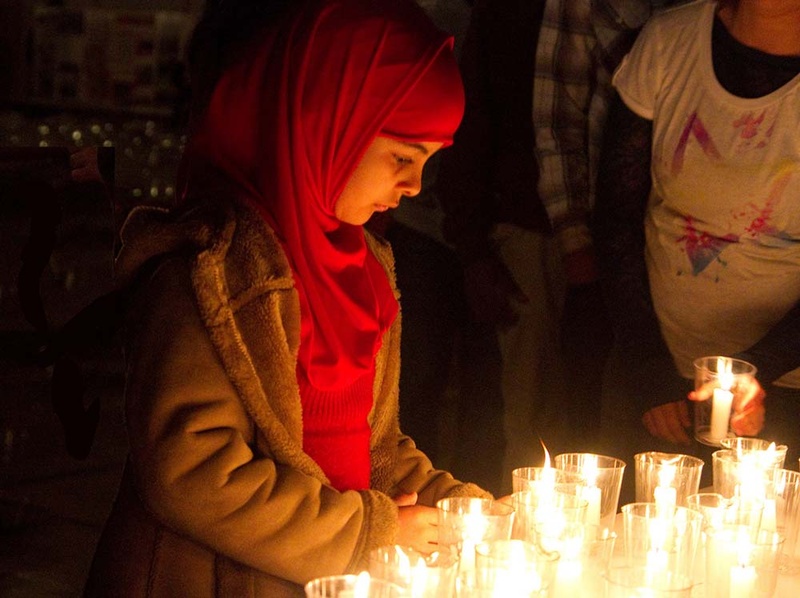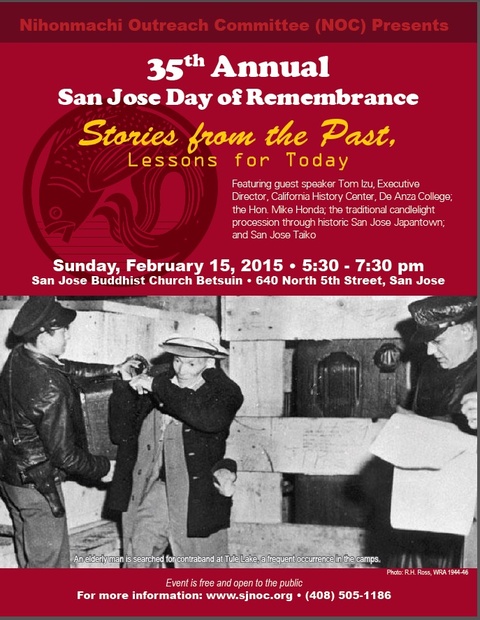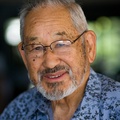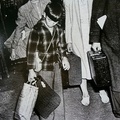The 2015 San Jose Day of Remembrance that will take place on February 15, 2015, commemorates the signing of Executive Order 9066, which occurred on February 19, 1942. This executive order led to the incarceration of more than 100,000 Japanese Americans during WWII.
The theme for the 35th San Jose Day of Remembrance event is “Stories from the Past, Lessons for Today.” During the program, personal stories about the Japanese American incarceration will be told by descendants of those whose lives were deeply affected by Executive Order 9066.
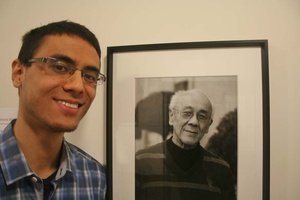
Kent Carson, a volunteer docent with the Japanese American Museum of San Jose (JAMsj), will be one of our speakers. He will recount the story of his grandfather, Terry Terakawa, who is also an active volunteer and a former board member of JAMsj.
Recently, Carson transcribed his grandfather’s story about what happened to his family after the Japanese attack on Pearl Harbor. After the attack, prominent members of the Japanese American community were immediately rounded up without due process and taken away. This is Terakawa’s story as told to Carson:
After Pearl Harbor, some FBI agents knocked on my door. We answered it, and they started going through our house, looking for something. They didn’t tell us why they were there or what they were looking for. I asked them what they were looking for, but they just ignored me because I was just a young kid. Of course, they were probably looking for weapons or some kind of evidence that showed any kind of collaboration with the Japanese.
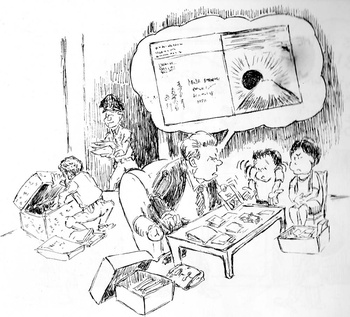 Similar to Terry Terakawa’s story, artist Jack Matsuoka depicts the experience of being visited by the FBI. Matsuoka’s artwork is on display at JAMsj.
Similar to Terry Terakawa’s story, artist Jack Matsuoka depicts the experience of being visited by the FBI. Matsuoka’s artwork is on display at JAMsj.They asked us where Dad was. He was a very high-ranking member of the Buddhist Church in Walnut Grove, California, and Salt Lake City, Utah, and they were obviously very suspicious of him and his connections to the Japanese American community.
He was in the hospital at that time. He had some kind of illness and had to be put into a big iron lung. I found out that they went to his hospital room, opened the iron lung machine, and tried to take him outside. The hospital administrators and doctors were so angry at these agents that they called up the agents’ superiors and reported what was happening. They were ordered to put Dad back into his hospital room. They said that they would wait until he was healthy enough to come back home, and then they would come see him.
Once he was out of the hospital, they came over to our house and arrested my father, and then took him away to the police station in our town, without even asking him any questions. They allowed my family to come down to see him one last time before they took him away to jail. At the station, officers walked him outside towards the transport bus. As they were walking away, my Mom handed me a picture of our family and told me to give it to my father to keep while he was in jail. I ran up to my father, but before I could give him the picture, I remember getting hit in the head by one of the officers and falling to the ground. Sadly, I wasn’t able to give him our family picture.
That was the last time I saw him for a long time, probably up to nine months or almost a year. I didn’t know where they took him, and I’m not sure they even told my Mom or anyone else in my family. We were living in Salt Lake City at the time, which even then had a very strong Mormon community. Fortunately for us, we were surrounded by many supportive people within that community who reached out and helped us. When my father was finally released and came back home to us, many people and community leaders in the area continued to support our family, especially my father. They said that if we needed anything or had any problems, they would help us out.
Carson reflected on his conversation with his grandfather. “Hearing my grandfather’s stories has helped inspire me. It’s an important part of history. It was a time when a community was torn apart. We can take lessons from that now and apply them to building and nourishing our own communities today.”
The San Jose Day of Remembrance will take place on Sunday, February 15, 2015, from 5:30 p.m.–7:30 p.m., at the San Jose Buddhist Church Betsuin, located at 640 North Fifth Street in San Jose, California. Each year, attendees gather to remember the great civil liberties tragedy from over seventy years ago and each one of us reflects on what that event means to us today.
For more information, visit www.sjnoc.org.
*This article was originally published on the JAMsj Blog on January 5, 2015.
© 2015 Will Kaku


